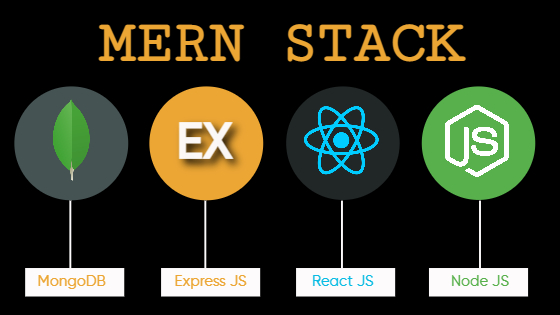The web development landscape has evolved tremendously in recent years, and the MERN stack has quickly become one of the most popular choices for building modern, full-stack applications. MERN—an acronym for MongoDB, Express.js, React, and Node.js—provides a powerful combination of technologies that allow developers to build fast, responsive, and scalable web applications with JavaScript from front to back.
In this blog, we’ll explore what makes the MERN stack so effective and take a closer look at some real-world applications that are built using this technology.
What Makes MERN Stack So Popular?
Before diving into real-world examples, let’s quickly understand why so many companies and startups choose the MERN stack:
- Single Language (JavaScript): Developers can work across both the front-end and back-end using JavaScript, which reduces context switching and improves productivity.
- Open Source and Community-Driven: All components of the MERN stack are open-source, meaning continuous updates, community support, and a large ecosystem of tools and libraries.
- Full-Stack Capabilities: MERN allows developers to manage the entire application lifecycle—from database management with MongoDB to user interfaces with React.
- Performance and Scalability: Node.js ensures fast execution, and MongoDB offers a flexible schema that can easily scale as your app grows.
Real-World Applications Built with MERN Stack

1. Project Management Tools
Many SaaS companies have developed project management and productivity tools using MERN. These platforms require real-time updates, responsive interfaces, and secure data management—capabilities that the MERN stack handles beautifully.
For example, Trello-inspired clone apps and custom internal workflow tools for businesses often leverage MERN to deliver task management, calendar integration, and user collaboration in real time.
2. E-Commerce Platforms
Modern e-commerce applications need to be fast, scalable, and dynamic. MERN is a top choice for building custom online stores, inventory management systems, and user dashboards.
Companies use React for creating an interactive and smooth shopping experience, Node.js and Express for server-side logic, and MongoDB for storing product data, customer details, and orders. With MERN, developers can also integrate payment gateways, shipping APIs, and real-time order tracking seamlessly.
3. Social Media and Chat Applications
Real-time data flow, user authentication, and dynamic UI updates are all essential for social media and chat apps. MERN offers all the tools needed to build applications similar to Facebook, Slack, or WhatsApp clones.
By using Socket.IO with Node.js, developers can add real-time communication, while MongoDB ensures efficient storage of user messages, notifications, and media files. React enables live updates and interactive interfaces for users to chat, share posts, and more.
4. Online Learning Platforms
The demand for e-learning platforms has skyrocketed, especially in the post-pandemic era. Applications like learning management systems (LMS), online course platforms, and virtual classrooms are increasingly built with MERN.
These platforms typically feature user dashboards, progress tracking, video content integration, and quizzes. MERN’s ability to manage both admin and student-facing portals makes it a solid choice for educational startups and training companies.
5. Healthcare Management Systems
MERN is also making inroads into the healthcare industry with applications such as patient portals, appointment booking systems, and digital prescriptions.
MongoDB’s flexible schema is ideal for storing diverse patient records, while React allows doctors and patients to interact through intuitive dashboards. Security features and authentication handled through Node.js and Express ensure the safety of sensitive medical data.
6. Job Portals and Recruitment Platforms
Job listing and recruitment websites demand high performance and robust filtering systems. MERN allows developers to build such platforms with dynamic search, user profiles, application tracking, and real-time notifications.
React ensures smooth user interaction, while MongoDB is excellent for managing large volumes of job postings and resumes. The seamless flow between components ensures a hassle-free user experience.
Companies Using the MERN Stack
Several well-known companies and startups use MERN (or parts of it) in their tech stack:
- Netflix: While Netflix is known for using React on the frontend, many internal dashboards and tools are believed to leverage components of the MERN stack.
- Uber Eats: The dashboard for managing restaurant listings and orders is built using technologies found in the MERN stack.
- Fiverr Clone Projects: Many startup marketplaces modeled after Fiverr use MERN to handle gig listings, user communication, and transactions.
While large corporations often mix multiple technologies, many startups and mid-sized companies stick with the MERN stack due to its speed, flexibility, and cost-effectiveness.
Want to learn MERN Stack? Join Ashcorp Academy – the best place to master application development using the MERN Stack
Conclusion
The MERN stack continues to gain traction because it simplifies full-stack development without compromising performance or scalability. From simple CRUD apps to complex SaaS platforms, MERN is capable of supporting diverse business needs.
If you’re planning to build a web application—whether it’s a social media site, a marketplace, or a healthcare portal—the MERN stack is a future-proof and developer-friendly option. With a thriving community and constant innovations, the MERN stack is set to remain a dominant force in web development for years to come.
Looking to build your next project using MERN? Ashcorp technology can understands how to bring your idea to life using the best of modern web technology.
